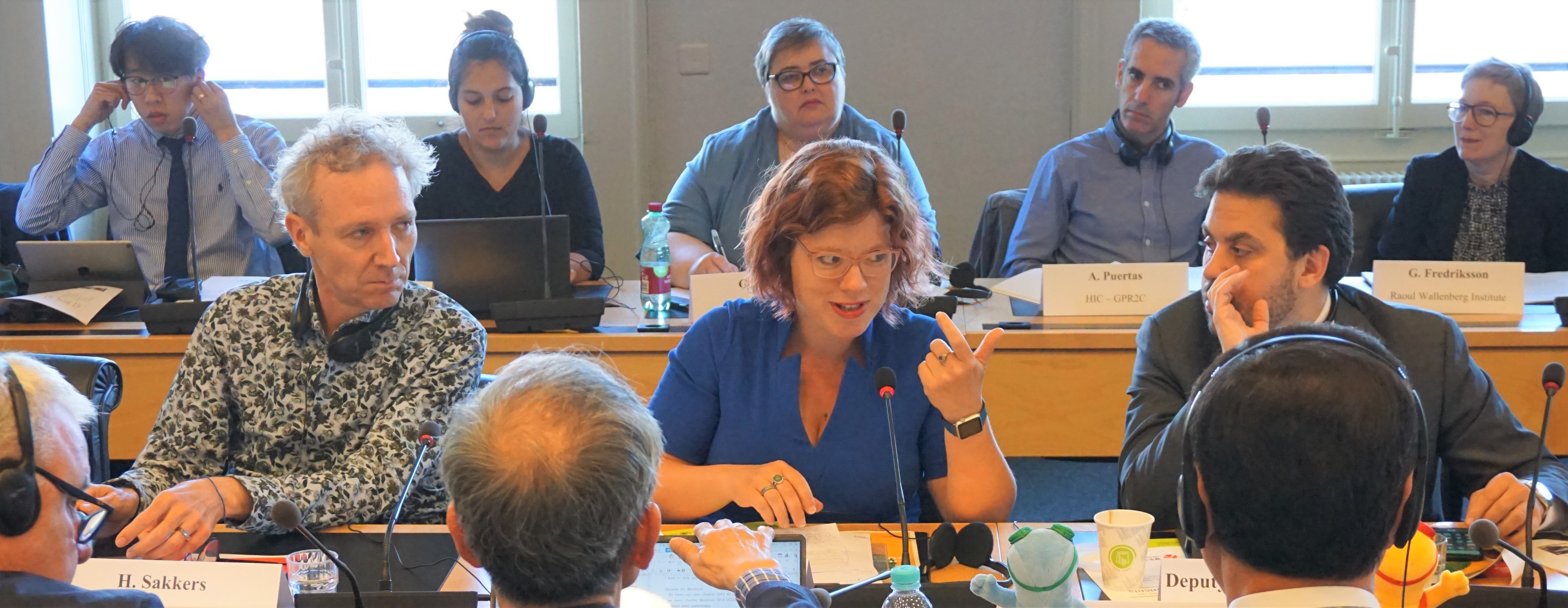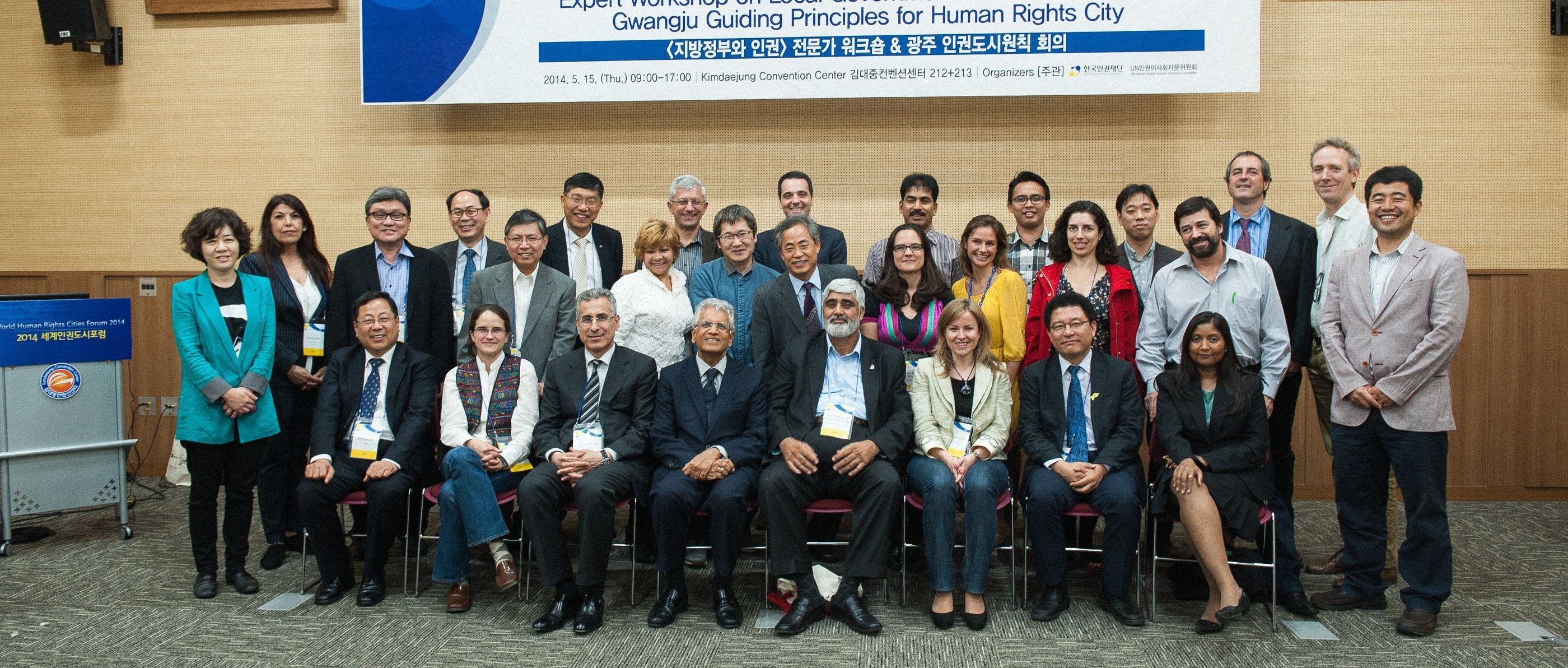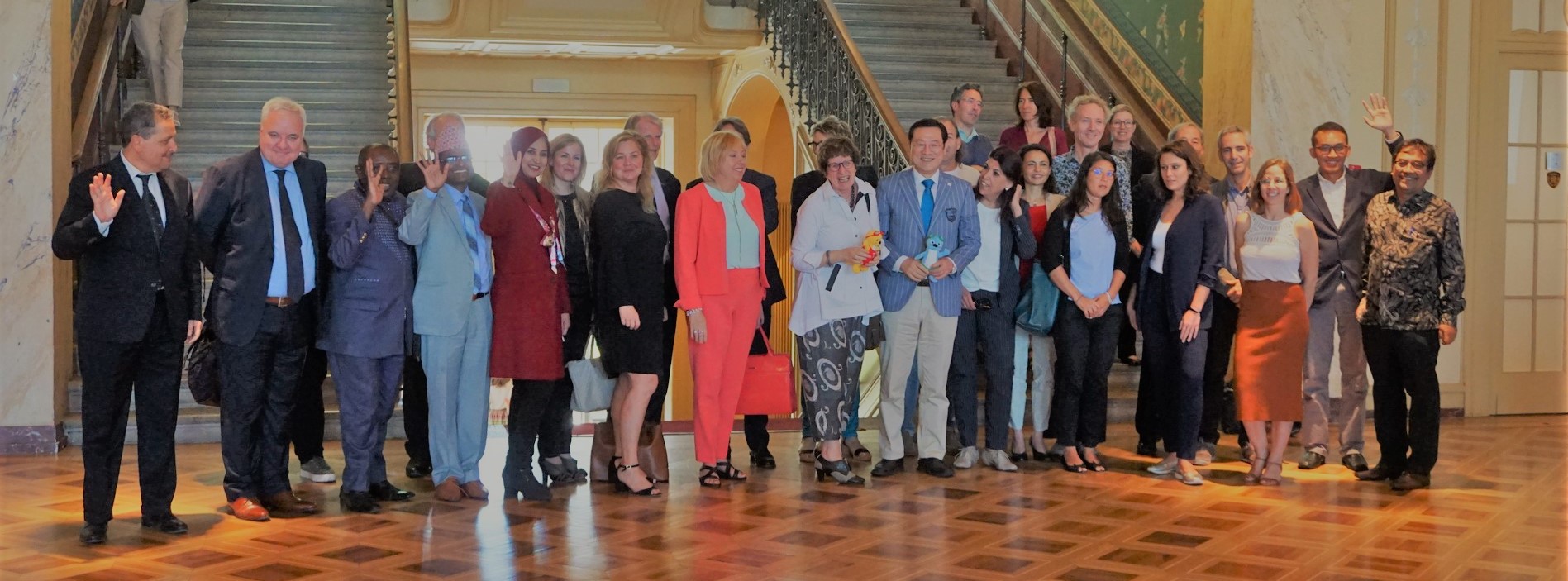Over the last 20 years, an increasing number of local governments across the world has taken a more prominent role in promoting and protecting human rights. Since the inception of the “human rights city” vision, back in the late 1990s, many local governments started to develop their own human rights agendas, building on their own needs and aspirations. Over time, the human rights city vision has expanded across the world, while policies put in place by local governments became more consolidated and far-reaching.
This section will help you know more about the role of local governments in protecting and promoting human rights from the local level to the global one. It explores the background and achievements of the human rights cities' movement. It also introduces key concepts linked to the Local Governments and Human Rights agenda. Click here to know more about our work on "Local Governments and Human Rights".

Why promoting local human rights agendas?
The global movement of local governments for human rights (or human rights cities movement) emerged by the late 1990s after various stakeholders started to emphasized the role of the city as a key space for the effective promotion of human rights. Many local governments’ would soon recognize their own responsibilities under international human rights law, and vowed to make human rights a reality in the day to day life of citizens as a way to transform their social inclusion and participatory democracy policies.
Facing the rise of the urban era, where most of the world's population now lives in cities and urban settlements, human rights have come to be seen as a meaningful framework to ensure that new opportunities brought about by urban environments are inclusive and accessible to all. This vision also emphasizes the need to address the new challenges produced by urbanization and globalization from a local point of view.
The human rights cities movement has been tackling specific human rights challenges linked to urbanization since its inception - from protecting habitat and housing rights to achieveing accessible and inclusive public spaces, addressing new forms of discrimination or developing an operational understanding of digital rights.
Therefore, local governments and the so called Human Rights Cities have focused not only on localizing international human rights standards, but also expanded the human rights agenda. They did so to address from a rights perspective emerging challenges while coming up with new, practical ways to implement rights. This process has developed in parallel and benefited from the outcomes of the global movement for the right to the city.
Cooperation with local stakeholders has always been a key feature of the human rights city concept - including civil society, grassroots movements, private sector or academia - alongside political leadership expressed by different mayors and city leaders over time.

As an international phenomenon, the human rights cities movement brought together hundreds of local authorities in all the world's regions (as well as many other stakeholders, from national institutions to international organizations, networks and foundations) to collectively promote human rights from renewed and locally-grounded perspectives.
Two decades of human rights municipalism
The late 1990s saw an increasing interest by the international community and civil society on the links between human rights and urbanization. From the People’s Movement for Human Rights Education (1988) to the Vienna Human Rights Conference (1993), several international initiatives would pave the way for a more consolidated discussion on how human rights could be better protected when framed and implemented locally.
As the closest level of government to city residents, local governments would soon develop their own initiatives in the field. Many would recognize their human rights' responsibilities as well as the potential of the human rights approach to address challenges they faced in their day-to-day action. Pioneer cities at that time can be found in South America (Rosario, 1997), North America (San Francisco, 1998) and Europe (Barcelona, 1998).
A landmark event in the human rights cities movement inception - that is, how international networking between local governments contributed to consolidate and expand the human rights cities vision - was the drafting process of the European Charter for the Safeguarding of Human Rights in the City. Launched after the “Cities for Human Rights” Conference held in Barcelona in 1998, the Charter would be adopted two years later in Saint Denis.

The Charter called for “a stronger political acknowledgment (of local governments) as key actors in safeguarding human rights”. In the following years, it managed to gather more than 350 signatory local authorities across the continent, triggering the adoption of new policies while laying the foundations of the European human rights cities movement.
« The commitment which we undertake concerns all people. It does not claim to be exhaustive and the breadth of its application depends on how far the citizens make it their own. It is merely an outline response to the aspirations of those citizens, aspirations which arose in the cities. This Charter contains a set of points which will enable all citizens to access their rights, and local government to facilitate their delivery and to recognize and put an end to any violations of those rights »
European Charter for the Safeguarding of Human Rights in the City (2000)
Local governments in other world regions would also launch their own human rights cities initiatives by the turn of the second millenium. In Asia, civil society organizations and government officials would meet in Gwangju by 1998 to launch the Asian Human Rights Charter; a landmark document which would inspire human rights defenders and regional networking initiatives among local governments on human rights in coming years.
In Latin America, local governments would also engage with rights-related struggles pioneered by urban social movements across the region. In 2001, Brazil’s “City Statute” would recognize the social function of the city. Mexico City became the first city to develop a local charter for the right to the city - a collaborative process spanning from 2007 to 2011 that resulted in the adoption of the Mexico City Charter for the Right to the City.
Montreal launched a local human rights charter in 2006 - the Montréal Charter of Rights and Responsibilities - becoming a pioneer document and policy initiatives for the North American region along New York's City Commission Human Rights and San Francisco's efforts to localize the CEDAW convention on the human rights of women and girls.
« The Montréal Charter is rooted in the values of human dignity, justice, peace, equality, transparency and democracy. These same values are shared by Montrealers and constitute the underpinning of those fundamental human rights recognized by the United Nations. The Charter is for all intents and purposes a social contract that calls for the concrete commitment of Montréal to the ongoing improvement of public services. Above of all, it is through the shared effort of citizens and Montréal that it is possible to ensure the respect of the rights included in the Charter »
Montréal Charter of Rights and Responsibilities (2006)
From 2010’ onwards, the movement would enter into a new phase. This new evolution would be marked by the development of more consolidated local government policies and commitments at the local level but also at an international scale.
On one hand, more cities would develop their own local human rights systems back at that time. From Gwangju enacting its first human rights ordinance (becoming the first in South Korea and one of the first human rights cities in the Asia-Pacific region); to Bogotá putting in place its local development plan inspired by the rights-based approach, which set the foundations for transformative action against poverty and inequality.
European cities like Graz, Vienna, Utrecht or Nuremberg would create or expand their human rights policies to address a wide set of thematic areas: From social inclusion of migrants and celebrating diversity to historical memory or sustainable development.
« The City of Vienna pledges to act as a guardian and defender of human rights by striving to respect, protect, fulfil and be accountable for human rights in all of its areas of competence. Based on this approach, the City of Vienna actively supports its citizens in asserting and upholding their human rights by providing adequate framework conditions and using them as a basis for its actions. This approach is based on the principle that every person living in the city has the same human rights – regardless of their nationality or residency status »
Declaration Vienna City of Human Rights (2014)
In 2011, the UCLG World Council held in Florence adopted the Global Charter-Agenda for Human Rights in the City: The first attempt by local authorities to adopt a global framework for implementing human rights at the local level. The Charter combined a localized understanding of international human rights principles with specific ways and proposals to implement them according to each city’s local reality.
« The Global Charter-Agenda for Human Rights in the City aims to promote and strengthen the human rights of all inhabitants of all cities in the world. All Charter-Agenda provisions apply to all inhabitants, individually and collectively, without discrimination. For purposes of this Charter, all inhabitants are citizens without distinction »
Global Charter-Agenda for Human Rights in the City (2011)
By the same year of the Florence World Council, the South Korean city of Gwangju organized the first World Human Rights Cities Forum (WHRCF), which would become the annual meeting point of local governments to share their policy developments in the field and advance the human rights city vision with other actors in the movement. In 2014, the WHRCF would adopt the Gwangju Guiding Principles for a Human Rights City as a specific follow-up to the rich outcomes produced by the Forum.

Participants to the Expert Meeting held in the 2014 edition of the World Human Rights Cities (WHRCF) Forum which would produce the Gwangju Guiding Principles.
The consolidation of the human rights cities movement led to another historical landmark, which was the opening of the recognition process of local governments’ role in the promotion and protection of human rights by the United Nations.
The Human Rights Council Advisory Committee presented the first dedicated report on this matter (A/HRC/30/49) in 2015, officially adopted by the Human Rights Council in 2016 through Resolution A/HRC/RES/33/8. These two documents kicked off an ambitious process of thematic engagement by the Council and UN agencies which led to a more active participation of local governments in global human rights conversations.
Other official documents were to be developed in the following years by the Human Rights Council or the Office of the High Commissioner for Human Rights (OHCHR) - a key support for the human rights cities movement which would help to progressively include the points of view of more and more local governments in UN human rights discussions.

Participants to the 2019 Meeting of Local Governments for Human Rights held in Geneva's OHCHR seat: A historical advance in the human rights cities agenda within the UN
The second half of the 2010’s has seen a consolidation of the human rights cities movement, with rising expertise, aspirations and leadership capacity by local governments participating in an increasingly diverse number of networking spaces. Over this period, more local authorities in more regions of the world have proposed new agendas on human rights: From Indonesia to Senegal, Ecuador to Turkey and South Africa. Regional networking in Europe, Latin America and Asia Pacific have also reached remarkable outcomes and gathered unprecedented levels of interest.
The movement has consolidated its capacity to collectively address and tackle old and new human rights issues. More cities are becoming interested in developing their own human rights policies every year, while those with a more consolidated experience are eager to support their endeavour through the creation of methodological guides and learning tools.
The human rights cities movement now looks at the future with renovated aspirations: Imagining new ways to enhance its impact capacity, its coherence as a movement and to give new meaning to international networking. Over time, local governments have undoubtedly become a fundamental platform for protecting and promoting human rights.
Concept resulting from the localization and interaction of human rights law in local settings, cities and human settlements. International documents like the European Charter for the Safeguarding of Human Rights in the City or the Global Charter Agenda for Human Rights in the City provide local governments with a framework to locally conceptualize and implement human rights.
An overarching vision adopted by local governments to promote human rights and turn them into a cross-cutting driver of local agendas on the basis of each city’s history, challenges and priorities.
The Gwangju Guiding Principles recognize the human rights city as a “urban community that applies the human rights-based approach to urban governance”, an “open and participatory process involving all stakeholders in the decision-making and implementation process”, a “framework to cultivate an inclusive and equitable city” and a “a specific responsibility to implement a human rights-based approach to municipal governance”.
Concept arisen from the European Declaration of Urban Rights (1992) to identify emerging rights linked to the city and the built environment, like security, a healthy environment, sport and leisure or good quality architecture and physical surroundings. Such rights would apply to urban residents and involve improving the physical urban environment, rehabilitating existing housing stock or fostering community development and public participation.
A conceptual and action framework based on human rights standards which governments should adopt to promote and protect human rights. For all intents and purposes, the HRBA analyzes human rights issues by addressing its root causes. It involves as key attributes of good governance the principles of transparency, responsibility, accountability, participation and responsiveness.


